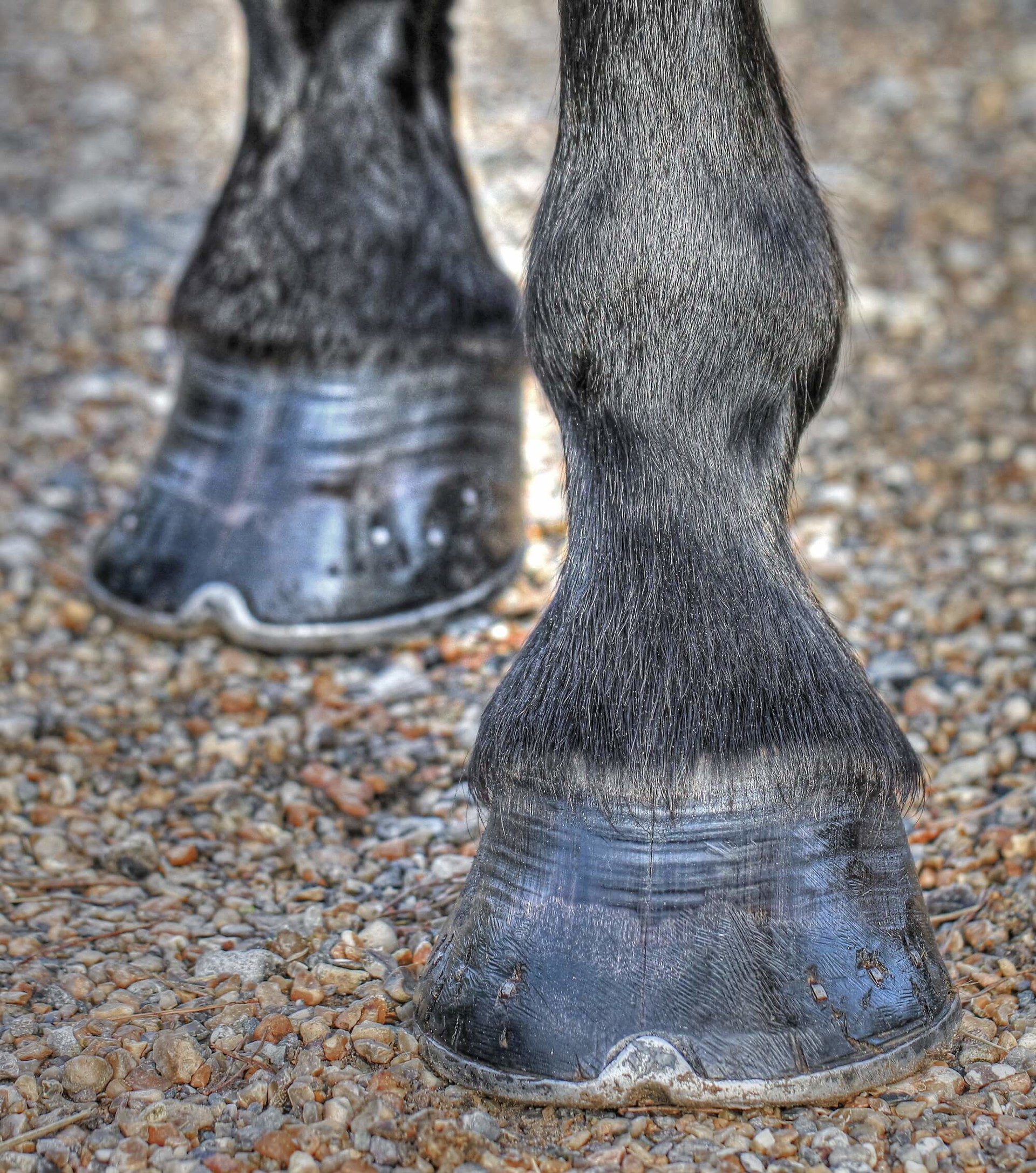Laminitis and EMS
10 Mar 2021
Laminitis is something we usually find ourselves talking about in Spring but this year we are seeing a large number of winter cases. 90% horses and ponies with laminitis suffer from Equine Metabolic Syndrome (EMS) or Cushing’s (PPID) and it is this underlying condition that makes them such a high risk for developing laminitis.
Cushing’s tends to be a condition affecting older horses (>15 yrs) and although we do see quite a lot of horses with Cushings we are now seeing many more with EMS which can occur at any age.
So what is EMS?
Horses and ponies have evolved to lose weight in winter and put it on during spring and summer, and this is especially true of native-types. While many do still gain in summer, modern practices such as rugging, over-feeding and lack of exercise mean fewer horses and ponies shed the extra weight during winter. This leads to year-on-year weight gain, which often goes unnoticed, and eventually EMS. Similar to Type-2 diabetes in people, horses with EMS have insulin resistance and it is this that predisposes them to laminitis. It’s not just laminitis that these horses suffer from, they are also at an increased risk of lameness and poor performance.
How do we diagnose EMS?
Often we suspect EMS based on a horse or pony’s body size and shape, especially if they have a cresty neck or fat pads on their body, but the diagnosis is confirmed by measuring insulin levels in the blood.

Laminitis is something we usually find ourselves talking about in Spring but this year we are seeing a large number of winter cases. 90% horses and ponies with laminitis suffer from Equine Metabolic Syndrome (EMS) or Cushing’s (PPID) and it is this underlying condition that makes them such a high risk for developing laminitis.
Cushing’s tends to be a condition affecting older horses (>15 yrs) and although we do see quite a lot of horses with Cushings we are now seeing many more with EMS which can occur at any age.
How is EMS treated?
Treatment of EMS is mostly through dietary restriction and exercise. There are drugs that can be given to help in some situations but they are not a magic cure and good management is the key. In horses and ponies that have developed laminitis as a result of EMS, it is almost impossible to treat the laminitis and prevent recurrence without treating the EMS.
Can EMS be prevented?
EMS is a disease that can be prevented, in all breeds, with good management. Pay good attention to winter management, especially feeding, rugging and exercise, so that any weight gained during the Summer is lost before the next Spring.
If you would like any further advice regarding EMS, Cushing’s or laminitis please contact the office and we can arrange for a vet to call you or book a visit for your horse or pony.